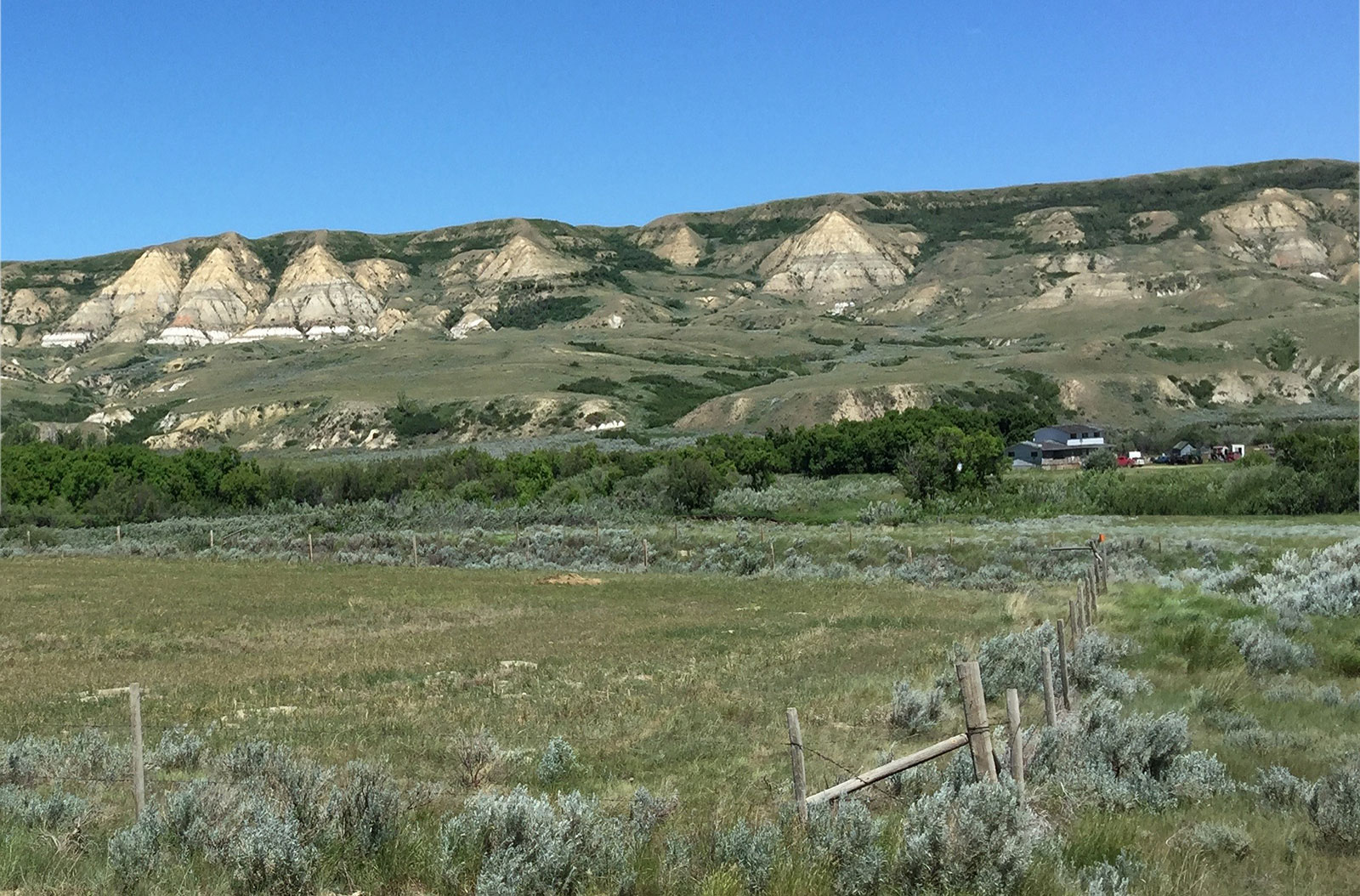Whitemud" clays in dinosaur country of southern Saskatchewan. These are Cretaceous. Jurassic? 1km straight down.
This is a "badlands" slope in the Frenchman river valley. The valley exposes the "Whitemud Formation" in many places (clearly visible here part way down on the left). Two surface mines of Plainsman Clays are nearby, in a place where lower-lying rolling hills leave much less over-burden to remove. These materials were laid down as marine sediments during the Cretaceous period. The skeleton of the world's largest T.Rex, dubbed "Scotty", was found 50km east of here (in the layers just above the Whitemuds). Where are the layers of Scotty's ancestors from the Jurassic period? Straight down 1 kilometer! And another kilometer to bedrock!
Pages that reference this post in the Digitalfire Reference Library:
Ravenscrag Slip is Born, Come to Help us Celebrate Potter Nick Saville, 77 million-year-old mugs cataloged and exhibited, The world's largest T.Rex could have walked on our clay!, These Saskatchewan grasslands lie almost right on top of pure clay!, Mother Nature's porcelain - From the Cretaceous period, El Dorado of Pottery Clay Finally Found!, T.Rex Discovery Centre, Whitemud Formation at Wikipedia, Medalta Potteries, Plainsman Clays, Clay

This post is one of thousands found in the Digitalfire Reference Database. Most are part of a timeline maintained by Tony Hansen. You can search that timeline on the home page of digitalfire.com.
